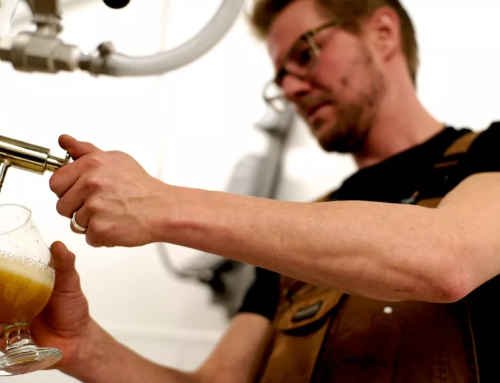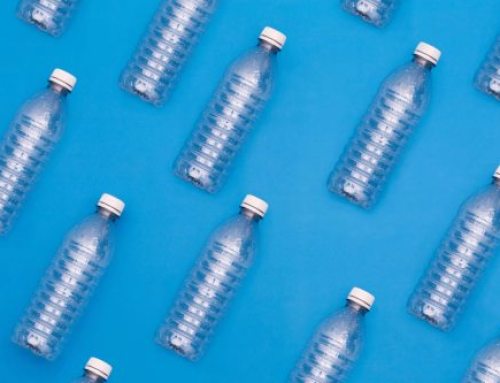Elderberry syrup
 Elderberries are packed with antioxidants, vitamins and minerals that can help boost your immune system, lower blood sugar, moderate digestion and even reduce wrinkles.
Elderberries are packed with antioxidants, vitamins and minerals that can help boost your immune system, lower blood sugar, moderate digestion and even reduce wrinkles.
These are great benefits for a small berry (you can read more about the health benefits and risks of elderberries here).
That said, this recipe was written as a syrup for culinary use only.
It is not intended to be consumed as a food supplement.
What's more, this recipe has been written to be canned in a boiling water bath for stable storage.
Without this heat treatment, it is not stable and the syrup must be refrigerated or frozen.
Elderberry jelly has the same delicious benefits, although it also contains more sugar.
Syrup is just another way of preparing elderberries, as it is not possible to nibble raw elderberries (uncooked stems, leaves and seeds are poisonous and should not be eaten).
Cooking the berries makes the seeds suitable for consumption).
I sweetened my syrup with honey, but you can also use organic sugar or evaporated cane juice.
Use a mild-tasting honey, as its flavour will come through strongly in the reduced syrup: if you don't like the taste of the honey itself, you probably won't like the final product.
The sugar also contributes to the preservation of the syrup.
You can certainly increase the sugar if you prefer a thicker, sweeter syrup, but don't omit it if you want to can the final product in a bain-marie (as with lemon juice, elderberries are not acidic enough to can safely).
If you omit the sweetener, you'll get a surprisingly acidic syrup... like sipping a sweet tart.
I've canned the syrup in these adorable little 40-gram jars, which each contain about 3 tablespoons of syrup.
If you want to freeze your syrup, I recommend dividing it into ice cube trays with about one tablespoon per cube, which will allow you to easily defrost one portion at a time.
Once frozen, you can transfer the cubes to an airtight container or bag and they will keep for up to 6 months.
Use frozen elderberries (and if you're looking, you can find frozen berry dealers online), but you can also use dried elderberries... just use 250 grams of dried berries instead of the 500 grams of fresh berries called for in the recipe.
Elderberry juice is another alternative, simply measure the amount given in the recipe and reduce it with honey and lemon juice to make a thick syrup (and you avoid the tedious process of straining the pulp).
To be honest, elderberries don't have much flavour on their own, the taste might be closer to a kind of sweet, alkaline blueberry.
The sugar, lemon juice and hint of ginger lighten the flavour and make it acceptable and, although tart, very tasty.
You could also replace the ginger with a cinnamon stick, or perhaps cloves? Flavour and spice as you wish!
Recipe for homemade elderberry syrup
cooking time: 45 minutes - total time: 1 hour
Harness the antioxidant properties of elderberries in this recipe for homemade elderberry syrup sweetened with honey.
It is excellent with soda, added to your favourite cocktail or drizzled over pancakes.
Ingredients :
500 grams of fresh or frozen elderberries, or 250 grams of dried elderberries, picked and stemmed.
750 ml of excellent quality filtered or spring water
60 gr. high quality honey (raw, unfiltered and unheated if possible) or 85 gr. sugar (you can increase the sweetness to your taste)
60 ml lemon juice
1 small piece of fresh ginger, peeled (optional and according to your wishes)
Spices: you can experiment with cinnamon, a fabulous flavour enhancer like whole saffron pistils, Espelette chilli pepper, etc. etc....
etc....
Instructions for use :
To make the juice, place the berries in a large heavy saucepan with water.
Cover and bring to the boil for 20 to 30 minutes, mashing the berries with a potato masher until they soften and release their juice.
Press the berries through a food mill or fine mesh sieve.
Discard the solids. Strain the juice a second time through a fine mesh sieve lined with cheesecloth to remove any remaining solids.
You should get about 700 ml of juice.
Pour 625 ml of prepared juice into a saucepan with the honey, lemon juice and ginger.
Bring to the boil, stirring occasionally, until the syrup has thickened slightly and reduced to around 625 ml over 10 to 15 minutes.
Collect and discard the ginger.
Once cooled, the syrup can be kept in the fridge for up to 2 weeks, or in the freezer for up to 6 months (pour the syrup into ice cube trays to make measuring easier).
If you are going to can the syrup, while the berries are cooking, fill a large pot or saucepan 2/3 full with water.
Place some sort of grill on the bottom and place it over medium-high heat.
Wash/sterilise your jars and immerse them in the bain-marie while it heats up.
The pan should be almost boiling when the syrup is reduced and ready to use.
Keep the jars in hot (not boiling) water until you are ready to use them.
Pour the hot syrup into sterilised jars, leaving a minimal 5 mm gap.
Wipe the edges of the jars and screw on the lids.
Boil for 10 minutes (7 if using smaller jars), then transfer to a rack to cool completely.
Check the joints.
Any unsealed jars should be refrigerated and used within two weeks.
Recipe for elderberry jelly
 To make elderberry juice, simmer the stemmed berries until tender and juicy, then put them through a food mill to remove the seeds and skin.
To make elderberry juice, simmer the stemmed berries until tender and juicy, then put them through a food mill to remove the seeds and skin.
The food mill was the most effective here (although I've seen references to devices called steam juicers which are apparently the best tool for making a large amount of juice. It's not the same as an ordinary juicer you'd use for carrots, kale etc).
Once the juice has been obtained, strain the liquid through a fine mesh sieve to ensure that no solids have passed through with the juice.
You can even go a step further and strain it into a muslin jelly bag if you prefer a super clear, sediment-free jelly.
To avoid spending too much time on it, I recommend that you divide this lengthy process into three days:
Day 1: Pick and destem your berries. Wash them well, then mix them with a little sugar and lemon juice and leave them to macerate overnight.
Day 2: Prepare the juice. Strain it, then cover it and put it in an airtight container in the refrigerator overnight.
Day 3: Prepare the jelly, pour into jars and place in a boiling water bath.
This particular jelly could be called triple elderflower jelly, as it contains elderflowers and berries in three different ways: the berries, the flowers infused in a syrup (recipe coming soon!), and the elderflower liqueur (like St. Germain liqueur).
I found the result to be a unique and intensely flavoured jelly, with a deep berry flavour and delicate floral nuances from the syrup.
That said, you can also make elderflower jelly without syrup, simply by adding a little more sugar and water to compensate for the volume.
 I recommend adding the elderflower liqueur (it really brings out the flavour of the jelly), but you can leave it out if you like.
I recommend adding the elderflower liqueur (it really brings out the flavour of the jelly), but you can leave it out if you like.
Elderberry jelly is not the quickest to prepare, but the result is well worth the effort: a deep purple jelly with a robust berry flavour and a hint of elderflower essence.
Ingredients
For the elderberry juice :
700 grams of fresh or frozen elderberries, picked and stems removed.
60 grams of organic granulated sugar
1 lemon, with its juice (about 2 tablespoons)
For the jelly :
125 grams of organic granulated sugar
2 1/2 teaspoons Pomona Universal Pectin
3 tablespoons lemon juice
2 1/2 teaspoons calcium-rich water
1/2 cup elderflower syrup
2 tablespoons elderflower liqueur (like St. Germain)
 Preparation:
Preparation:
In a bowl, combine the elderberries with 60 grams of granulated sugar and the juice of one lemon.
Mix until the berries are evenly coated.
Cover and refrigerate overnight to allow the berries to soften.
To make the juice, place the berries in a large heavy saucepan, cover and bring to the boil for 5 to 10 minutes, mashing the berries with a potato masher until they soften and release their juice.
Put the berries through a food mill. Discard the solid parts.
Strain the juice through a fine mesh sieve to remove any remaining solids that may have passed through.
If you want an even clearer jelly, strain the juice again into a muslin jelly bag.
Measure out 2 cups of prepared fruit juice.
Leftover juice can be refrigerated and stored for another use.
The juice can be prepared in advance and refrigerated in an airtight container until you are ready to make your jelly.
Fill a large saucepan or preserving pan 2/3 full with water; place a griddle at the bottom and set over medium-high heat.
Wash/sterilise your jars and immerse them in the bain-marie while it heats up.
The pot should be almost boiling when the jam is ready.
Keep the jars in hot (not boiling) water until you are ready to use them.
In a bowl, whisk together the sugar and pectin until evenly distributed.
Pour 2 cups of prepared juice into a saucepan with the lemon juice and calcium water.
Bring to the boil, stirring occasionally to avoid burning.
Stir in the sugar and pectin until completely dissolved and the mixture comes back to a full boil.
Add the elderflower syrup and the liqueur and bring the mixture back to the boil.
Remove from the heat and pour the jam into the hot jars, leaving a 5 mm headspace.
Wipe the edges of the jars and screw on the lids.
Place in boiling water for 10 minutes, then transfer to a wire rack to cool completely.
Check for leaks. Unsealed jars should be refrigerated and used within 3 weeks.
Enjoy a fresh bottle of Honey Gardens Elderberry Honey Immune Drink for your health and well-being. Fill up the fridge!
Recipe for elderflower syrup
 The preparation of the syrup is actually quite easy: much easier than the jelly (believe me!) Again, as with the berries, the stems are poisonous, so you should remove as many as possible before macerating.
The preparation of the syrup is actually quite easy: much easier than the jelly (believe me!) Again, as with the berries, the stems are poisonous, so you should remove as many as possible before macerating.
A few small bits on the flowers are acceptable, but as many as possible should be cut off.
Once cut, the flowers are infused in a hot sugar syrup with lemon slices and a pinch of citric acid (you can also use lemon juice) until they have given their floral essence to the syrup, about 3 to 5 days, or until the flowers start to turn brown.
Strain the finished syrup into an airtight jar or other container and refrigerate for up to 1 month.
Or, for longer-term storage, bring the syrup to the boil, then divide it between canning jars and place in a water bath.
Once sealed, they will keep for up to a year.
This homemade elderflower syrup is perfect for mixing into drinks or drizzling over fruit or yoghurt!
Ingredients :
375 grams of elderflowers (from 2-3 large sprays)
1 organic lemon, sliced
500 grams of organic granulated sugar
500 ml filtered or spring water
1/4 teaspoon citric acid or 1 tablespoon lemon juice
Instructions for use :
Rinse the flowers, shaking them to remove any debris or insects that might be hiding inside.
Cut the stems, getting as close to the base of the flowers as possible (the stems are slightly poisonous and, although a few won't hurt, you definitely want to get rid of as many as possible).
 Place the flowers in a bowl with the sliced lemon.
Place the flowers in a bowl with the sliced lemon.
In a saucepan, heat the sugar and water until simmering and the sugar has completely dissolved.
Add the citric acid or lemon juice.
Pour the hot syrup over the flowers.
Cover and refrigerate for 3 to 5 days, until the flowers start to turn brown and the syrup takes on a pale yellow hue.
Strain the syrup through a fine mesh sieve, discarding the remaining flowers.
At this stage, the syrup can be stored in the fridge in a jar or other airtight container for up to 1 month.
For longer storage, prepare a water bath canner and wash and sterilise the canning jars.
Heat the syrup in a saucepan until it boils, then pour into hot jars, leaving a 5 mm headspace.
Leave for 10 minutes.
Properly sealed, the syrup will keep for up to a year (refrigerate after opening).










Bonjour, pouvez vous me dire combien temps on peut garder le sirop de maïs de sureau quand on le mets en bocal stérilisé
Thank you